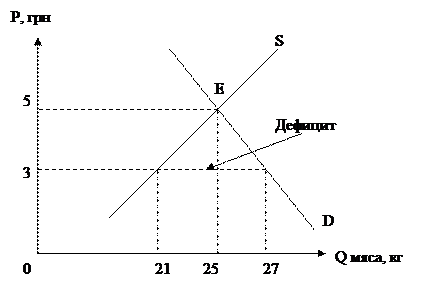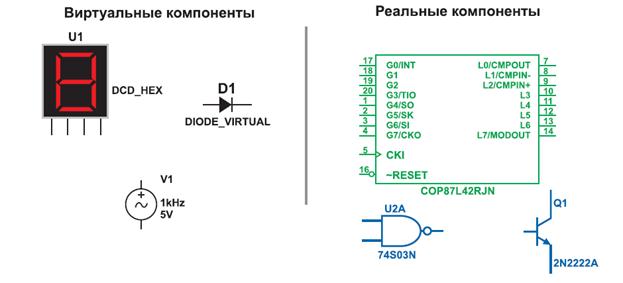Types of Electric Circuits
Electronic circuits are electric circuits the operation of which depends on the flow of electrons for the generation, transmission, reception, and storage of information. The information can consist of audio signals as in radio, TV images, or data in a computer. Electronic circuits provide different functions to process this information, including amplification of signals, generation of radio waves, extraction of information, control and logic operations. There are two types of electronic circuits: conventional and integrated. Conventional circuits consist of separate electronic components connected by wires. Often, components are attached to a circuit board. A circuit board is a small board that contains electronic components connected to form a circuit. The circuit can be designed to accomplish a single electronic task, such as supplying power. It can be designed to accomplish many tasks, such as those performed by a calculator. Typically, the board is a flat piece of non-conducting material. Many circuit boards are made as printed circuit boards (PCB’s). Machines imprint the board with patterns of conducting material that create the desired circuits. The technique used is called photolithography. Electronic components are attached at designated spots along the pathways. Integrated circuits have components and connectors formed on a chip. Chips are tiny pieces of semiconductor material, usually silicon. Semiconductors are substances that conduct electric current better than insulators, but not as well as conductors. Integrated circuits often serve as components of conventional circuits. Because of their small size, integrated circuits have several advantages over conventional circuits. Integrated circuits work faster, because the signals have less distance to travel, they also need less power, generate less heat, and cost less to operate than conventional circuits. Integrated circuits are more reliable. A microprocessor, a type of integrated circuit, can perform the mathematical functions and some of the memory functions of a large computer.
Exercise 6. Answer the following questions.
1. What is an electronic circuit? 2. What does an electronic circuit contain? 3. What does the operation of electric circuits depend on? 4. What can the information consist of? 5. What do electronic circuits provide? 6. How many types of electronic circuits are there? 7. What do conventional circuits consist of? 8. What is a circuit board? 9. What is the circuit designed to accomplish? 10. What are many circuit boards made as? 11. What technique is called photolithography? 12. What are chips? 13. What are semiconductors? 14. What advantages do integrated circuits have over conventional circuits? 15. What is a type of integrated circuit? 16. What can a microprocessor perform?
Exercise 7. Give Ukrainian / Russian equivalents to the following word combinations:
a) amplification of signals, generation of radio waves, extraction of information, separate electronic components, a flat piece of non-conducting material, because of their small size, the operation of electric circuits, electronic components connected to form a circuit, a single electronic task, the technique used, at designated spots along the pathways; b) to depend on the flow of electrons; to consist of audio signals, TV images, or data; to be attached to a circuit board; to be made as printed circuit board; to imprint the board with patterns of conducting material; to create the desired circuits; to serve as components of conventional circuits.
Exercise 8. Give English equivalents to the following word combinations:
Exercise 9. Form verbal word combinations. Translate them.
Exercise 10. Put general and special questions to the following sentences. 1. The operation of electric circuits depends on the flow of electrons. 2. The information can consist of audio signals or TV images. 3. There are two types of electronic circuits: conventional and integrated. 4. Electronic components are attached to a circuit board. 5. Semiconductors are substances that conduct electric current better than insulators. 6. Integrated circuits need less power than conventional circuits.
Exercise 11. Fill in the blanks with prepositions and adverbs given below: (Of, on, by, at, along, over, because, as, for) 1. The operation of electric circuits depends … the flow … electrons … the generation, transmission, reception, and storage … information. 2. These tasks are performed … a calculator. 3. Electronic components are attached … designated spots … the pathways. 4. Integrated circuits often serve … components … conventional circuits. 5. … … their small size, integrated circuits have several advantages … conventional circuits.
Exercise 12. Write out five verbs in the forms of the Present Indefinite Passive from the text.
Exercise 13. Open the brackets using the verbs either in the Present Indefinite Active or the Present Indefinite Passive.
1. A direct current (flow) through a circuit in one direction. 2. An alternating voltage source (apply) to the circuit. 3. Fire (course) by the short. 4. The fuse (melt) and (open) the circuit. 5. In a series circuit the electrical devices (connect) so that the current (flow) from one device to another. 6. The variable resistor (use) to change the resistance of circuits. 7. Fixed capacitors (made) of paper, ceramics and other materials. 8. High resistance materials (call) insulators. 9. The short circuit often (result) from cable fault. 10. Electronic circuits (provide) different functions to process this information. 11. The circuit can (design) to accomplish a single electronic task. 12. Integrated circuits often (serve) as components of conventional circuits.
Exercise 14. Change sentences from Passive to Active.
1. Different functions are provided by electronic circuit. 2. The technique used is called photolithography. 3. Magnetic effects can be produced by electric current. 4. The components of the series circuit are arranged in such a way that they are connected end to end. 5. A conductor can be heated by electric current. 6. The voltage is varied by a transformer. 7. A fuse is included in a parallel circuit to prevent overheating. 8. Circuits may be broadly divided into four types. 9. The board is imprinted with patterns by machines.
Exercise 15. Translate the following sentences into English.
Exercise 16. Speak on the types of electric circuits.
Exercise 17. Read the text and translate it in writing.
|




